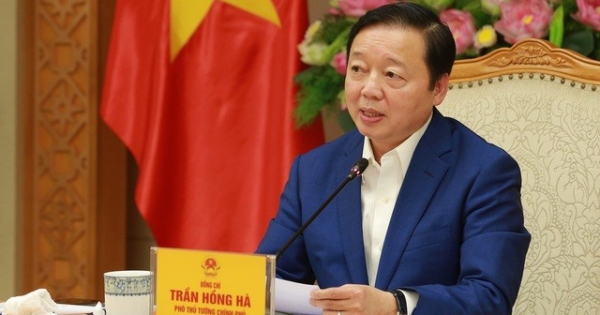No Limit on Land Fund for Infrastructure Investment Projects in Industrial Zones and Energy
![]()
Phó Thủ tướng Trần Hồng Hà recently had a direct online meeting with relevant ministries and localities to discuss the draft decision on adjusting the land allocation targets for the period until 2025, as specified in Decision No. 326/QD-TTg issued by the Prime Minister. The Ministry of Natural Resources and Environment reported that the implementation of national land use targets has been achieved at a very low rate in many localities, resulting in the need for additional adjustments.
While some localities have urgent needs, the proposal to adjust land use targets for certain types of land, such as industrial zones and transportation land, is primarily based on expectations rather than actual results. It fails to consider the occupancy rates of industrial zones, the shift in economic structure, the capacity of technical and social infrastructure, available resources, and investment attraction.
Some provinces have included land use requirements in their provincial and district plans to ensure consistency. However, they currently lack the necessary conditions for implementation. There are also provinces that have not conducted proper assessments of land use needs in their planning and land use plans, leading to significant discrepancies between proposed and actual land use requirements. This situation delays land utilization, negatively impacting the rights of land users and resulting in land and social resource wastage.
The Ministry of Natural Resources and Environment has reviewed and refined seven principles for adjusting land use targets among provinces by 2025, as specified in Decision No. 326/QD-TTg.
Deputy Minister of Natural Resources and Environment Lê Minh Ngân emphasized that the adjustment of land use targets must ensure fairness, transparency, efficiency, and economy. It should balance the land use needs of various sectors, fields, and localities, align with practical considerations, and contribute to the country’s overall development objectives.
Accordingly, the ministry proposes reducing non-agricultural land use targets based on local proposals. For instance, areas with misclassified land use, industrial land targets with implementation rates below 5%, and transportation land targets with implementation rates below 5% should be adjusted. Additionally, priority should be given to increasing land use targets for provinces with high implementation rates and proposals associated with legal projects and constructions to facilitate implementation.
Priority for increasing industrial land use targets should be given to provinces that achieve high implementation rates and belong to dynamic and high-growth economic regions. These provinces should also have advantageous infrastructure structures and the ability to attract investment.
Land for infrastructure development should be concentrated in important national projects and key transportation and energy projects from 2021 to 2025. Projects not included in the Medium-term Public Investment Plan from 2021 to 2025 but are in line with planning and have significant economic and social implications should also be considered.
During the meeting, the localities expressed their agreement and understanding regarding the land use target adjustment requirements. They exchanged information and requested that the Ministry of Natural Resources and Environment provide precise data on actual land use in certain areas. The localities also suggested studying solutions for areas that have already reached their land use targets but still require additional land allocation.
In conclusion, Deputy Prime Minister Trần Hồng Hà emphasized that the adjustment of land use targets aims to create favorable conditions for the development of localities with promising opportunities. The adjustment should focus on urgent issues, ongoing projects, and constructions that are awaiting land allocation. Importantly, the overall land use targets for each locality until 2030 should not be changed.
Deputy Prime Minister Trần Hồng Hà specified that there are no limitations on land use for infrastructure investment projects in industrial zones and energy sectors as planned. This ensures timely capture of investment opportunities, as well as projects approved by the Prime Minister and authorized authorities.
Localities are advised to closely coordinate with the Ministry of Natural Resources and Environment to review project land use requirements, feasibility, investor commitments, and implementation phases before the effective date of the amended Land Law (2024) on January 1, 2025. This will contribute to an overall proposal addressing national land use planning adjustments for the 2021-2025 period.
The Ministry of Natural Resources and Environment, together with the Ministry of Planning and Investment and relevant agencies, will draft documents to submit to competent authorities, authorizing localities to implement plans and land use planning on their territories.

